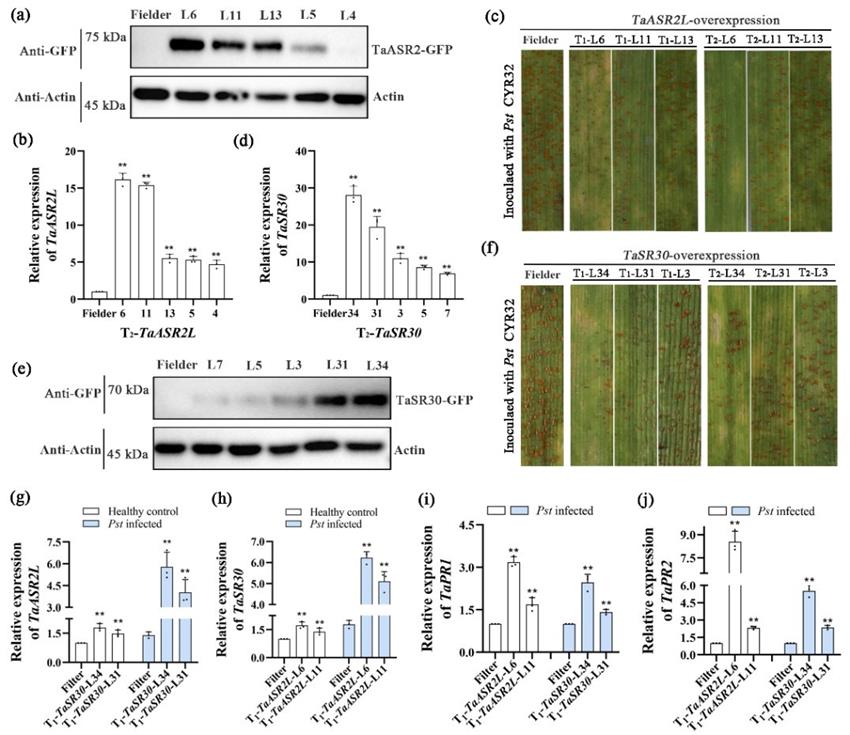Recently, an online research paper titled "Abscisic acid-, stress-, ripening-induced 2 like protein, TaASR2L, promotes wheat resistance to stripe rust" was published in Molecular Plant Pathology by the Crop Disease and Pests Monitoring and Management Team from our college. The paper reveals the mechanism by which TaASR2L promotes the expression of pathogenesis-related (PR) genes and enhances wheat resistance to stripe rust through interaction with TaSR30. Postdoctoral researcher Wang Qiao and Ph.D student Tang Yaqi are co-first authors of this paper, while Professor Wang Baotong and Associate Researcher Li Qiang are co-corresponding authors.
Stripe rust, caused by Puccinia striiformis f. sp. tritici (Pst), is one of the most devastating diseases of wheat. The plant hormone abscisic acid (ABA) plays a crucial role in regulating plant responses to stress. ABA-stress-ripening-induced proteins (ASRs) have been reported to be induced in large quantities under biotic and abiotic stress to protect plants from damage. However, the function of wheat ASR2 protein (TaASR2L) in plant responses to biotic stress remains unclear.Using the Barley Stripe Mosaic Virus (BSMV)-induced gene silencing system to transiently silence the TaASR2L gene reduced wheat resistance to stripe rust, indicating that TaASR2L positively regulates wheat resistance to stripe rust. Protein interaction studies showed that TaASR2L interacts with the serine/arginine-rich splicing factor SR30-like protein (TaSR30). Further studies found that TaASR2L and TaSR30 mainly interact in the nucleus, and both can interact with themselves to form homooligomers. Transient silencing of the TaSR30 gene also significantly reduced wheat resistance to stripe rust. Transgenic overexpression of TaASR2L and TaSR30 promoted the expression of ABA and resistance-related (PR) genes, thereby enhancing wheat resistance to stripe rust. In addition, exogenous application of ABA significantly increased the expression levels of TaASR2L and TaSR30, enhanced wheat resistance to stripe rust, and induced the expression of PR genes.The study shows that when wheat is infected by stripe rust, TaASR2L plays an important role in the signal cascades of ABA signaling and RNA splicing pathways, which work together to enhance wheat resistance to stripe rust. This study provides new insights into further revealing the mechanism of wheat resistance to stripe rust and the utilization of germplasm resources in disease-resistant breeding.

Transgenic overexpression of TaASR2L and TaSR30 enhances wheat resistance to stripe rust
This research was supported by the National Key Research and Development Program of China and the Shaanxi Provincial Key Research and Development Program, among others.
Original link: https://doi.org/10.1111/mpp.70028